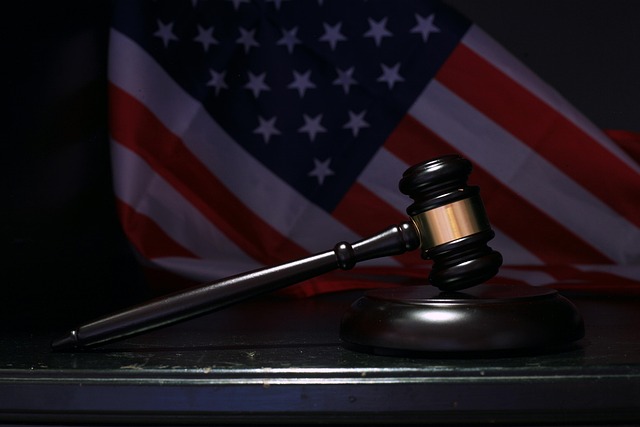The Importance of Evidence in Criminal Litigation is paramount, shaping trials and verdicts through collection, presentation, and interpretation of physical, testimonial, forensic, and circumstantial evidence. Skilled attorneys strategically use these types of evidence to build defenses and achieve favorable outcomes, especially in white-collar cases. Effective handling of evidence, including digital evidence, is crucial for fair resolutions via plea bargains or jury trials.
In the intricate dance of criminal law, evidence stands as a cornerstone, shaping the outcome of trials and upholding justice. Understanding the role of evidence is paramount, as it guides juries through the labyrinthine process of decision-making. This article delves into the multifaceted world of criminal law cases, exploring the importance of evidence in litigation. We dissect types of evidence, their strengths, and weights, while unearthing challenges in admission and evaluation. By navigating these complexities, we aim to illuminate the crucial role evidence plays in ensuring fair and just outcomes.
- Understanding the Role of Evidence in Criminal Trials
- Types of Evidence: Strengths and Weights in Litigation
- Challenges in Admitting and Evaluating Criminal Law Evidence
Understanding the Role of Evidence in Criminal Trials

In criminal litigation, evidence serves as the cornerstone upon which cases are built and judgments are rendered. Its importance cannot be overstated, playing a pivotal role in shaping the narrative of every trial. From establishing facts to proving intent, evidence is essential for both prosecutors and defenders to construct compelling arguments. The process of collecting, presenting, and interpreting evidence is intricate, requiring meticulous attention to detail and adherence to legal protocols.
The significance of evidence extends beyond mere fact-finding; it influences the course of justice and often determines the outcome of cases, especially in high-stakes trials like white-collar offenses, which are prevalent across the country. In jury trials, where decisions are collectively made by laypeople, clear and concise presentation of evidence is crucial for ensuring a fair and just verdict. Effective use of forensic analysis, witness testimonies, and physical clues can make or break a case, underscoring the central position of evidence in criminal law proceedings.
Types of Evidence: Strengths and Weights in Litigation

In criminal litigation, the importance of evidence cannot be overstated. Types of evidence range from physical and testimonial to forensic and circumstantial, each carrying its own strength and weight in court. Physical evidence, like fingerprints or DNA samples, provides direct links to a defendant, while testimonial evidence from witnesses offers firsthand accounts. Forensic evidence, such as ballistics reports or toxicology tests, uses scientific analysis to corroborate or refute claims. Circumstantial evidence, meanwhile, includes patterns of behavior and inferences drawn from facts that indirectly suggest guilt.
The strength and weight of evidence play a pivotal role in achieving extraordinary results for clients involved in white-collar defense cases. Skilled attorneys leverage the nuances of each type to construct robust defenses. By presenting compelling evidence and effectively challenging the prosecution’s case, lawyers can sway juries or judges, ultimately working towards the best possible outcome for their clients. This strategic approach underscores the significance of evidence in criminal litigation, where a strong evidentiary foundation can make all the difference.
Challenges in Admitting and Evaluating Criminal Law Evidence

The importance of evidence in criminal litigation cannot be overstated; it forms the backbone of any case, shaping its trajectory and often determining its outcome. However, presenting and evaluating evidence in criminal law cases presents a multitude of challenges. From the initial stages of collection during investigations to its admission and analysis in court, every step demands meticulous handling.
One significant challenge lies in ensuring that all evidence is obtained through legal and ethical means, respecting individual rights and privacy. This is crucial, especially with advancements in technology, which have introduced new forms of digital evidence, adding complexity to the process. Additionally, evaluating evidence must consider its relevance, reliability, and potential biases, requiring a comprehensive understanding of both the law and the specific context of each case. The outcome often hinges on how effectively this evidence is presented, making it imperative to navigate these challenges seamlessly throughout all stages of the investigative and enforcement process, ultimately aiming for a fair and just resolution, whether through plea bargains or jury trials.
In the intricate dance of criminal law, evidence serves as the cornerstone upon which justice is built. Understanding the role, types, and challenges surrounding evidence is paramount for ensuring fair trials and accurate outcomes. As this article has explored, the importance of evidence in criminal litigation cannot be overstated. By recognizing the strengths and weights of various forms of evidence, while navigating their admisibility and evaluation, we fortify the foundations of our legal system, ultimately fostering a more just and equitable society.






